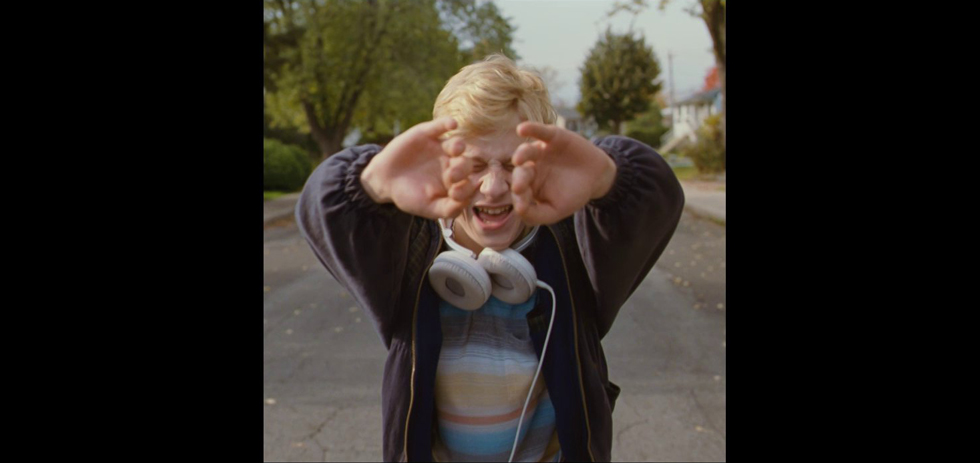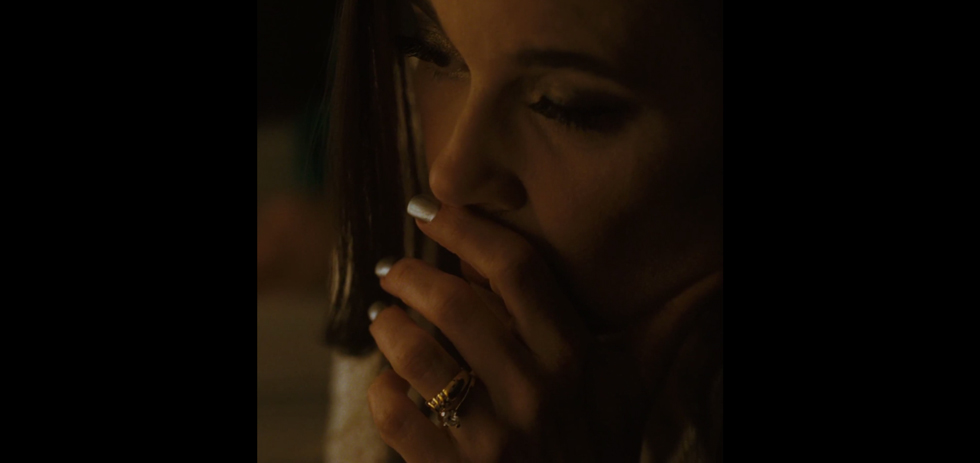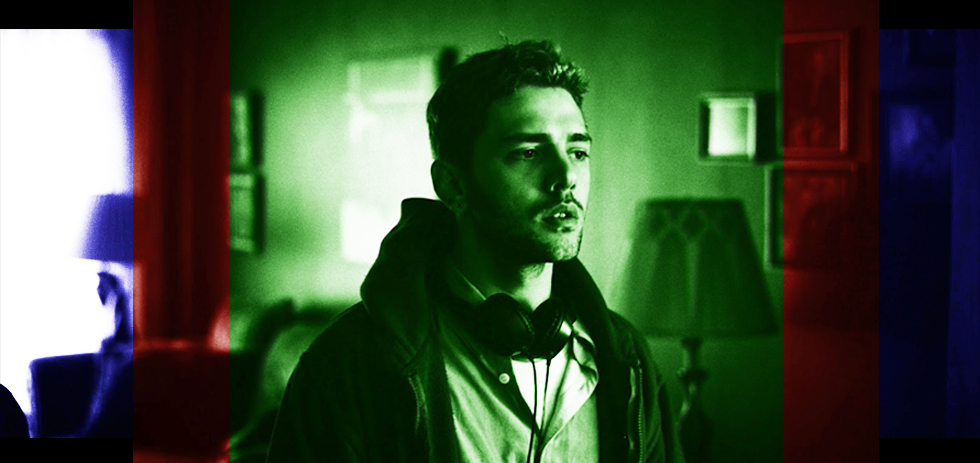Xavier Dolan has emerged as one of contemporary cinema’s pre-eminent portraitists of queer and troubled misfits. He works in melodramatic modes to establish characters and the problems that plague them, then probes the possibility of their belonging to a society, belonging together, and what such a constellation might look like. His divergence from traditional melodrama lies in the source of these characters’ problems; where traditional melodrama thrives on the personification of ideological or societal conflicts, Dolan’s characters are just as often the victims of gradually rising self-sabotaging impulses.
Cinema, though, is a landscape medium. Up until Mommy, Dolan turned this to his merit, utilising all corners of the frame to exteriorise his characters’ interiors with aplomb. Often he achieved this while tipping his hat to those among his paramount influences – Sirk, Van Sant, Kar-wai – giving rise to a style that is as expressive as it is referential. Take the intimately deep red, blue or green washes of antemeridian pillow talk in Heartbeats, or the literal wall of water that cascades down onto Fred (Suzanne Clement) in Laurence Anyways subsequent to a burdensome revelation. This is textbook melodrama – the proximity of film style and technique to theme.
Admittedly, most of these character-developing set pieces exist in brief, hyper-stylised moments bracketed off from the flow of narrative. This alone has seen some of the director’s most energised work denounced as mere gratuitous flourish, and it seems an extension to melodrama’s track record for being terminally misunderstood that the virtue of these moments is oft-overlooked. Perhaps it’s also because they so unabashedly wear the influence of Dolan’s masters on their sleeves that their reception is so often sour. Either way, the message from the critical corpus to the Quebecois director has been loud and clear: these movies have maximal style, and minimal substance.
I’m not the only native to the camp that instead sees these devices as part and parcel of an exciting new voice, and few questions seem as exciting to me as how it will refine over coming features.1 Rather, it’s the consensus that seems lazy, derivative, and self-perpetuating. To paraphrase Susan Sontag, it’s erroneous to fault an excess of style. Style is not quantitative: all texts have style, but none has more style than another. Why, then, are we so keen to admit these films have a style, but so reluctant to question its relation to theme, narrative and character? Dolan’s movies draw attention to their form – and the forms of other movies – to create layered and intertextual narratives and paint fuller portraits. That’s a cunning and economic use of melodrama.
The stylistic tics of Jean-Luc Godard’s Pierrot le Fou find themselves scattered throughout Dolan’s debut, I Killed My Mother, and it’s neither particularly trenchant nor difficult to suggest a reason for the inversion of Godard’s film into an anti-cerebral, claustrophobic domestic drama. It reads as an updated, queer and hermetic version of Pierrot where the two leads never escaped the ennui of their domestic frustration. In this and his next film, Heartbeats, the trademarked slow-motion sequences of Wong Kar-Wai’s In the Mood for Love are copy-pasted with equal intentionality, technique serving to reiterate his characters’ sense of self-composure as bastions of style, fashion or grace. Even as Mother’s precious lead, Hubert (played by Dolan), descends into rage, the sequence is slowed, controlled. Dolan, as director, isn’t so condescending as to point out what’s obvious in these moments – that Hubert is a brat, or Heartbeats‘ Francis (Dolan, again) and Marie (Monia Chokri) are ostentatious and insecure. He’s just too damn empathetic.
As such, these films are inordinately concerned with performances, surfaces and exteriors, about how characters perceive themselves and are perceived by others. So too is Mommy, Dolan’s latest Oedipal drama and a film that, to some extent, sees Dolan come full circle. Though newly caked in make-up and sporting precariously high platform heels, Anne Dorval essentially reprises her I Killed my Mother role as a widowed single parent, with Antoine Olivier Pilon stepping in as her witty but self-destructive son, Steve. Their turbulent relationship is recounted with musical sequences aplenty. The real gamechanger, however, is the movie’s 1:1 aspect ratio – marketed as a perfect square, though an optical illusion makes it seem more vertical than horizontal – which twice expands into wide-screen in tandem with the dim horizons of the ADHD-affected Steve likewise broadening. Here, then, is a conceit sure to see the director’s numerous detractors sharpening their knives – Dolan is manipulating the very being of his film so as to demonstrate his characters.

At the same time, this crucial change-up necessarily mutates Dolan’s signature style; to someone too often accused of unnecessary sumptuousness, what is ostensibly a radical clamp on such tendencies should present the ultimate test of true colour. The boxy ratio accommodates none of the flourishes he’s been docked for. Instead, the director’s knack for portraiture finds itself expressed in a style that favours close-ups and domestic settings. Then again, more distant framings wouldn’t suit his visual vocabulary – they’d be too cold and abandoning.
As many have pointed out, this style begets a sense of claustrophobia that suits the domesticity of the drama. Unsurprisingly, it also restricts space for conventional cinematic techniques. Conversations shot in over-the-shoulder, shot-reverse-shot techniques are few and far between. In fact, they’re reserved almost entirely for a few key moments, like Die confiding that Steve has ADHD to Kyla, during which only Dorval’s face and the back of Clements’ head make it into the square frame. What transpires in these scenes shows that such intimacy is unique to this ratio – any wider would permit more dead space, letting the air out. Other divergences from this seeming one-character-per-shot rule are also effectively deployed to convey, for example, intrusion when Kyla forces Steve to the floor and lies on top of him while berating his egregious behaviour, or harmony during the dancing scene that takes place in the kitchen.
Most of the time, however, a one-character-per-shot ethos reigns. Whizzing camera movement between two talking characters is used during the more ecstatic conversations. Elsewhere, simple cutting between them is favoured. But ultimately, this technique serves to enrich Dolan’s empathy for all three of his leads. If the camera is transfixed on them, then it’s beholden to hear them out, and one need look no further than Steve’s turn at karaoke for how devastating this kind of balladry can be. The director also winks at the boxed-in aspect, as with an under-the-radar visual quip in the diner scene that takes place between Steve, Die and the crass date whose favour Die wants to curry: a series of front-on shots alternate between the three characters as they talk, and it’s not until Die’s date turns up his tacky flirting that an exterior, would-be establishing shot reveals Steve to be sitting at the adjacent table.

The aspect is also manipulated into producing a disorienting effect, like when Die, in a scene that takes place shortly thereafter, tears off through an underground car park in a fit of boozed-up, karaoke-induced rage, the tight framing and lack of setting establishment effectively conveying her anxiety. Perhaps the most remarkable function of the aspect, however, is its unyielding attachment of characters to their settings, in some ways a extension of melodrama’s tendency to locate metaphor and character detail in setting. The film consistently matches one character – Steve; Die – to the environment they’re in – swinging a shopping trolley in a supermarket car park; putting on the laundry, looking gaudily out-of-place in hot pink business wear in high-end bank. Through both visual dissonances and performance, the movie interrogates their belonging to or displacement from these places, and much of what we know about these characters ultimately comes from their interaction with the milieus.
Like all of Dolan’s films, Mommy wants simply to question the prospect of these people finding a sense of belonging, and by shooting in 1:1, the director has taken a vice and spun it into a virtue. This hasn’t done much in the way of alleviating a sour reception; “Wilfully over determined and perversely stylised,” begins Glenn Kenny’s review, while The New Yorker’s Richard Brody hastened to declare Mommy the worst to eighth-worst movie of 2014, inclusive. They’re right to take issue with the fact that the film is still a little rough around the edges; some of Dolan’s musical sequences crash more than they land, and the introductory text detailing a conceit both foretells the ending and is subsequently tucked away until the precise moment that the narrative requires it. In some ways, this is the mark of a young director taking emotional build-ups to their most extreme payoff. But in all other respects, Mommy is the surest affirmation yet that he’s a talent to watch out for.
